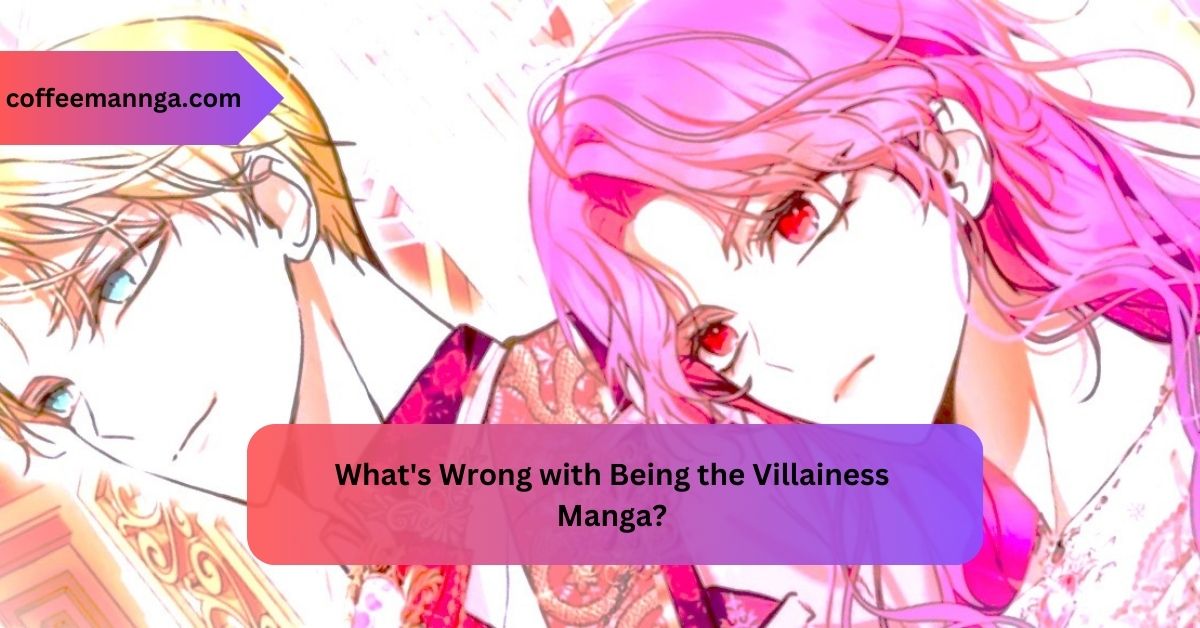What’s Wrong with Being the Villainess Manga?
Villainess manga has captured the hearts of many readers, especially with the popularity of series like “What’s Wrong with Being the Villainess?” But what makes this specific genre stand out? Villainess stories often revolve around a character who is originally portrayed as evil or flawed but gets a second chance to rewrite their story.
The unique charm of villainess manga lies in its blend of drama, romance, and self-discovery, where the so-called “villain” often ends up as the heroine. “What’s Wrong with Being the Villainess?” takes this trope and spins it into a delightful narrative, where the lead character navigates through societal expectations, relationships, and personal growth.
What Is Villainess Manga?
Villainess manga revolves around characters who were either born or cast into roles as antagonists. The common thread is the protagonist, often a woman, who is reincarnated or reborn into a story where they play the villain. Instead of succumbing to the fate of a villain, they challenge their role and seek redemption or empowerment.
Common Themes in Villainess Manga
Villainess manga often explores themes like:
- Reincarnation: The protagonist gets a second chance at life, allowing for self-reflection.
- Revenge and redemption: Characters seek to rewrite their fate or change the outcome of their story.
- Romance and rivalry: Love triangles and rivalries are common, adding emotional tension.
Plot Overview of “What’s Wrong with Being the Villainess?”
In “What’s Wrong with Being the Villainess?” the story follows a young woman who finds herself reincarnated into the body of a notorious villainess from a popular novel. Faced with her new identity, she must navigate the consequences of her character’s past actions while finding a way to change her fate.
Key Characters
- The Villainess (Main Character): A once heartless antagonist who now seeks to rewrite her story.
- Love Interests: Multiple characters who develop romantic ties to the protagonist.
- Rivals and Friends: Other characters who either support or challenge the villainess’s journey.
The Rise of the Villainess Trope in Manga
The villainess trope has become a popular sub-genre in manga. With many readers tired of predictable storylines with traditional heroines, these stories offer a refreshing twist. Villainess manga taps into the idea of rewriting one’s narrative, giving characters who were once doomed a chance at redemption.
Comparing “What’s Wrong with Being the Villainess?” to Other Series
Series like “My Next Life as a Villainess” or “The Villainess Turns the Hourglass” also explore similar themes. However, “What’s Wrong with Being the Villainess?” stands out for its emphasis on the protagonist’s growth and the complexity of her relationships.
Understanding the Main Character’s Journey
The journey of the main character in “What’s Wrong with Being the Villainess?” is one of self-discovery. She learns to break free from societal expectations, embracing her past mistakes while forging a new path. This transformation is relatable and resonates with readers who may feel trapped in their own roles in life.
Why Do Readers Relate to the Villainess?
Readers find villainess characters compelling because they are flawed, human, and relatable. They are often seen as underdogs who fight against the odds, which mirrors real-life struggles. Villainess characters are not perfect heroines, making their growth more rewarding.
Common Tropes in Villainess Manga
Villainess manga often includes recurring tropes, such as:
- Reincarnation and Redemption: Characters get a second chance to right their wrongs.
- Romance and Rivals: Love interests are frequently part of the story, adding emotional complexity.
- Social Hierarchies and Power Struggles: Villainesses often come from nobility or high society, leading to intriguing power dynamics.
Themes Explored in “What’s Wrong with Being the Villainess?”
The manga explores a variety of themes, including:
- Revenge and Redemption: The protagonist seeks to change her fate.
- Friendship and Loyalty: Relationships with friends and allies play a key role in her journey.
- Power Dynamics: Navigating social and romantic power struggles is a central theme.
Feminine Empowerment in Villainess Stories
Villainess manga often reflects themes of feminine empowerment. The protagonist takes control of her destiny, defying traditional gender norms. Instead of being a passive character, she exercises agency and autonomy, which appeals to modern readers seeking strong female leads.
The Artwork and Style of “What’s Wrong with Being the Villainess?”
The art style of “What’s Wrong with Being the Villainess?” is visually stunning, with detailed character designs and expressive scenes that enhance the emotional depth of the story.
How Artwork Enhances the Storytelling
Through the art, emotions are amplified, and characters’ internal struggles are visually represented. Symbolism is used to reflect themes like power, love, and betrayal.
The Popularity of Villainess Manga in Western Countries
Villainess manga has found a strong fanbase outside of Japan. The themes of second chances, self-reinvention, and empowerment resonate with readers from different cultures, making the genre increasingly popular worldwide.
Adaptations of Villainess Manga
Several villainess manga, including “What’s Wrong with Being the Villainess?” have been adapted into light novels or anime, expanding their reach and popularity.
Criticisms and Challenges of “What’s Wrong with Being the Villainess?”
While the series is beloved by many, it is not without its flaws. Some readers find that the pacing slows in certain arcs, or that the use of familiar tropes can become repetitive. Despite these criticisms, the depth of the main character keeps readers engaged.
Conclusion
“What’s Wrong with Being the Villainess?” is a standout in the villainess manga genre, offering readers a captivating journey of growth, empowerment, and romance. With a compelling protagonist and rich themes of redemption and power dynamics, it has become a beloved series that speaks to readers worldwide.

